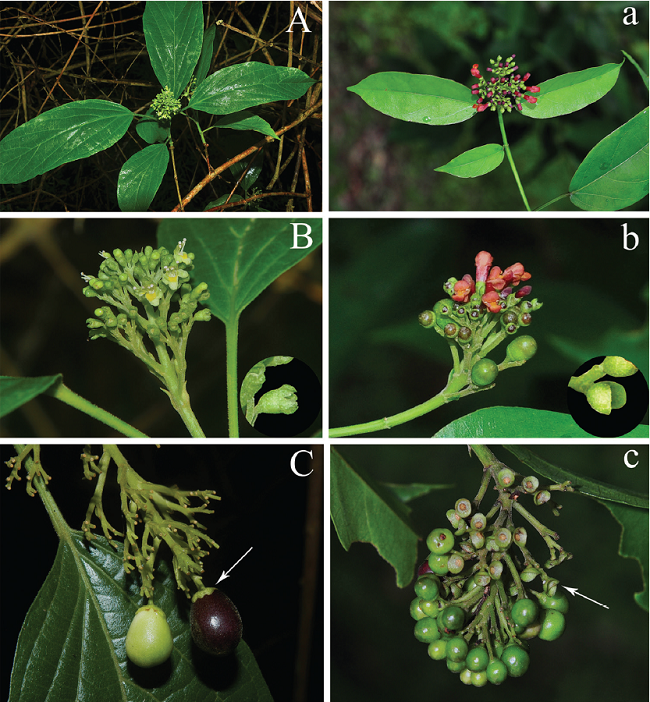With 46 species recognized in China, Premna is the fifth largest genus in Lamiaceae. When carrying out filed investigation of the biodiversity of Prema in Yunnan province, researchers found a rare Premna shrub in the fruiting stage at Xishuangbanna Tropical Botanical Garden (XTBG).
In order to verify the information about the origin of the putative new species, researchers examined the XTBG introduction records and found that this plant was introduced from Bhamo County, Kachin State of northeastern Myanmar in the 1980s. However, precise location data and the collection date had not been recorded.
Researchers from XTBG and Southeast Asia Biodiversity Research Institute of Chinese Academy of Sciences (CAS) visited Kachin State of northeastern Myanmar for many times during 2011 to 2016. However, the plant was not found in this area.
The researchers consulted a large amount of literature and studied specimens. They found that seven Premna species have been recorded from Kachin State. However, none of them is morphologically similar to the putative new species.
Therefore, they confirmed that the species of Premna is new to science. Based on morphological characteristics and the locality, Bhamo County, where the species was originally collected, they named the species as Premna bhamoensis.
Based on the living plants as well as dry specimens, the researchers carried out morphological observations of the new species.
Premna bhamoensis is a climbing woody shrub. It is most similar in morphology to P. menglaensis but differs. It has dense branchlets and petioles, and leaf blades papery with minute pubescence. The flowers are green to greenish yellow. The calyces are slightly 2-lipped with five equal lobes, and the stamens exerted from corolla.
Since the researchers have neither rediscovered the wild population of P. bhamoensis in Myanmar, nor identified any other specimens in the herbarium, they propose to temporarily list the species as a taxon under the Data Deficient (DD) category.
The new species has been published in PhytoKeys. The study was supported by the Southeast Asia Biodiversity Research Institute, Chinese Academy of Sciences (Y4ZK111B01), and the National Natural Science Foundationof China (grant no. 31460044).
Contact
TAN Yunhong Principal Investigator
Center for Integrative Conservation, Xishuangbanna Tropical Botanical Garden, Chinese Academy of Sciences, Menglun, Mengla, Yunnan 666303, China
E-mail: tyh@xtbg.org.cn

Morphological comparison between Premna bhamoensis (A–C) and P. menglaensis (a–c).
A, a branchlets with inflorescences B, b inflorescences, flowers and calyces (in the blank circle) C, c fruitescences and fruits (arrow show fruiting calyx).
(Images by TAN Yunhong)

